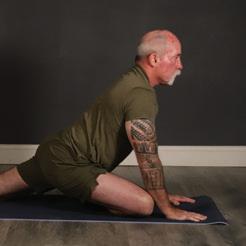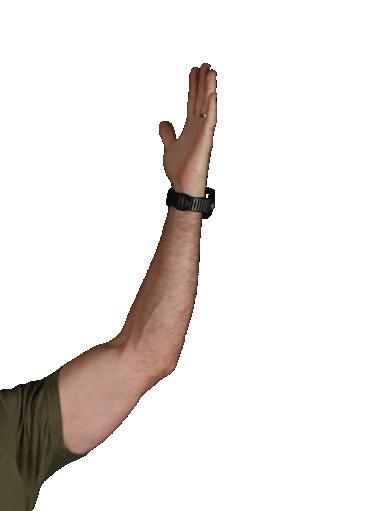
5 minute read
FEEL THE FLOW WITH YOGA
feel the flow By Janel Norton, Yoga Specialist / O2X
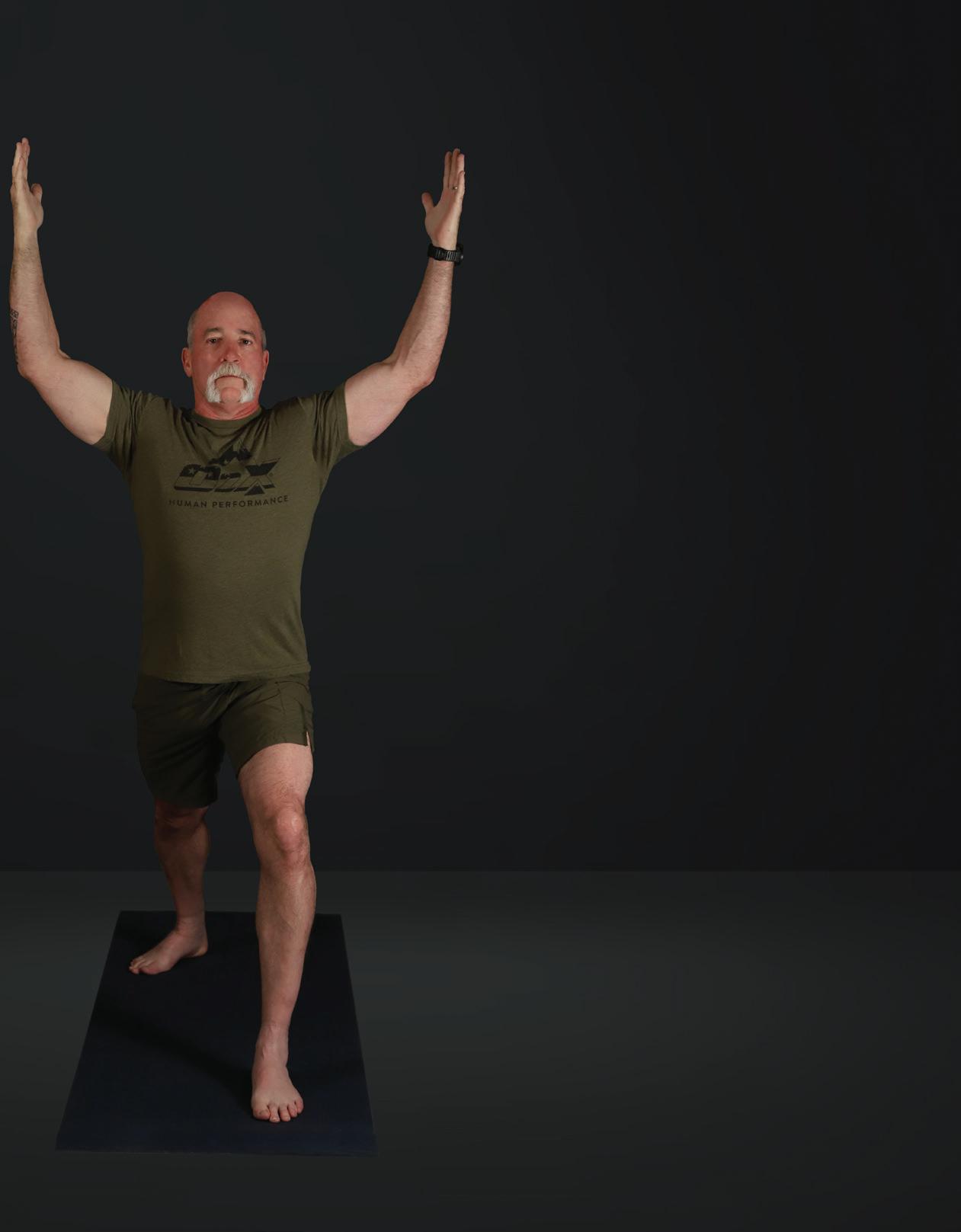
No matter where you live, first responders all reside in the same state: the state of being sympathetic. Being able to perform physically and mentally in a job that deals with life-or-death decisions daily can take a huge toll on our bodies and our minds. And when the nervous system experiences these traumatic events, it needs to process them.
In the groundbreaking book “The Body Keeps the Score,” Dr. Bessel van der Kolk explains how we record all of our experiences through our senses, and if we can’t fully process them, they can become “stuck” as issues in our tissues and cause all sorts of havoc later.
Thankfully, we have some tools that can help us mitigate and even thrive as first responders. We all know that exercise, a great regulator for the nervous system, is necessary in order for us to perform our jobs. And one form of exercise that can benefit first responders at any age and stage in their lives is yoga.
Yoga is unlike any other form of exercise in that it creates a profound awareness of the connections between breath, body, and mind. And it is an adaptable practice, meaning there are profound benefits to be reaped depending on what you need that day.
There are many styles of yoga, from a restorative stretch to a soul-crushing hot power flow. Some days we need strength, some days we need peace. By knowing and listening to your body and taking into consideration the demands of the job, each practice can be tailored to correct imbalances, increase functional strength and flexibility, and make mental gains to keep you operating at your peak.
A good place to start is with our legs. They are inherently strong for mobility, but underusing them or being seated for long periods can lead to tight hip flexors, shortened muscles, and weak stabilizers. Yoga helps create functional leg strength and flexibility by training muscles to work together, reinforcing joint action to support the whole body.
There are 84 Asanas (postures) that help create awareness within the mind/body, including ones that focus on legs and hips. Find stillness and hold each pose for five to ten full breaths. As you breathe in and out using full diaphragmatic breaths (in through your nose, out through your mouth), notice where you are holding tension in the body. See if with each inhale you can create space in the tightness, and with each exhale try to soften and release tension. Find ease. Flow through the five-posture sequence on one side, then switch to the other. When finished, pause for 10 breaths in a standing position with eyes softened or closed, and notice sensations in the areas you just worked. Notice the open space and strength you created.
From a standing position, put your hands on your hips and step your right foot back and angle back toes about 60 degrees. Keeping hips squared, exhale and bend your left leg, knee over ankle. Inhale to extend your arms overhead, eye gaze follows.
warrior one
OPENS HIPS, CHEST AND SHOULDERS, OPENS WHOLE FRONT AND SIDE BODY, IMPROVES CIRCULATION, CREATES STABILITY AND FOCUS.
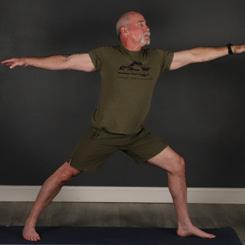
warrior two
STRETCHES GROIN, HIPS, SHOULDERS, TONES LEGS, CORE
From Warrior One position, take a deep inhale and exhale to open your shoulders and hips to the right as you extend your arms in opposite directions - front to back, parallel to the floor. Keep your knee tracking over your ankle (you should be able to see your big toe). Soft eye gaze focused on front middle finger.
tree pose
HELPS WITH BALANCE & STABILITY, CONCENTRATION & PROPRIOCEPTION LEADING TO INCREASED INTERNAL AWARENESS. TONES FEET, LEGS, & GLUTES
From a standing position, bring all your weight into your left leg and set your eye-gaze on something in front of you. Inhale and externally rotate your right knee and hip open. Exhale and place your right foot inside your left leg either above or below the knee. Feel the stability created by the opposing force of foot pressing into leg and leg pressing into foot. Inhale, arms overhead, and find stillness for five to ten breaths. Imagine you are a tree and think about growing your branches taller with each inhale and rooting down into each exhale.
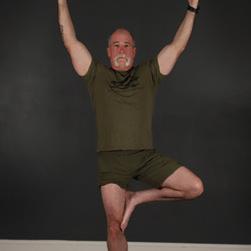
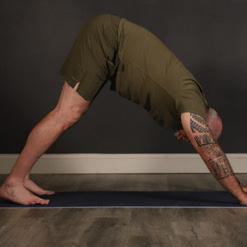

downward-facing dog
MILD INVERSION CREATES LENGTH & STRENGTH THROUGH THE ENTIRE SPINE, BUILDS SHOULDER STABILIZER STRENGTH, HELPS ALLEVIATE BACK PAIN, LENGTHENS HAMSTRINGS & CALVES, & BUILDS CONFIDENCE BY SEEING THE WORLD THROUGH A DIFFERENT PERSPECTIVE
From a standing position, feet hip width apart, exhale and bend knees deeply as you forward fold placing palms onto the floor. Press fingers and palms deeply into the floor, shoulders engaged. Inhale and exhale stepping back into an inverted V shape. Let heels sink toward the floor. Try to get as much weight out of your wrists as possible by pressing upper ribs back towards upper thighs. Inwardly rotate your elbows and feel the upper back broaden. Draw shoulder blades down your back and let your head hang heavy and loose.
pigeon
DEEP HIP OPENING POSE, INCREASES HIP FLEXIBILITY, HELPS SCIATICA & LOWER BACK PAIN
From Downward Dog, inhale and raise your right leg. Exhale and draw your leg under your body to place your right knee behind your right wrist. Work your shin towards a position parallel with the top of your mat. Keep flexion in your right foot to protect your knee joint. Let your left leg extend straight behind you. Inhale, lengthen your upper body, exhale, hold. If you feel comfortable, begin to bring the chest towards the floor. (Modification: if the right hip is high off the floor, place a pillow or blanket under it and soften into the pose.)
